Last Chance to Catch NYC's Holiday Notalgia Train
We met the voices of the NYC subway on our nostalgia ride this weekend!


In New York City, there are few remnants of the quarantine hospitals that once treated the city’s sick during pandemics. There is the former tuberculosis pavilion on the inaccessible North Brother Island. A burial ground was discovered years later near the Staten Island quarantine hospital which was burned down by an angry mob. The original buildings at Bellevue, the city’s first quarantine hospital have long been replaced by more modern structures. The buildings on Hoffman and Swinburne islands have been demolished. This leaves one of the most iconic and intact structures still remaining from that era: the James Renwick-designed Smallpox Hospital on Roosevelt Island.
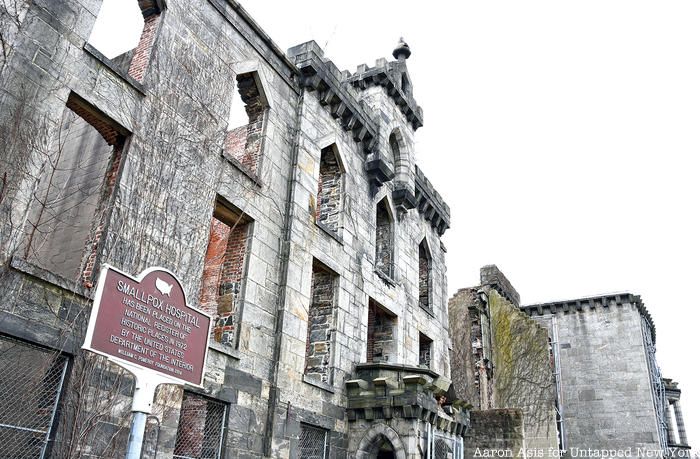
Artist Aaron Asis, Untapped New York’s Artist in Residence, was recently granted rare access inside the Renwick ruin to explore the interior conditions and share the structural potential of this historic building. Susan Rosenthal, President & CEO of the Roosevelt Island Operating Company (RIOC) facilitated this exploration, of which the primary aim was to shoot video footage Asis is gathering for his series, Unforgotten Films (of which Untapped New York is a media partner). Unforgotten Films has been featured on WNET and the videos released thus far, about the New York Pavilion at Flushing Meadows Corona Park, Fort Totten, and Hart Island, were the subject of a recent sold-out event at the Brooklyn Historical Society.

Asis documents under-appreciated structures around the city in order to share their untold stories and increase awareness around the importance of their preservation. This episode of Unforgotten Films will focus will be on the historic relevance of the Renwick smallpox hospital ruin, the importance of its preservation, and further insight into the broader context of Roosevelt Island. For now, Asis has shared with us these beautiful photos of the almost never-seen interior, a timely location to feature during the coronavirus crisis.

The smallpox hospital was completed in 1856 and designed by James Renwick Jr. (who designed St. Patrick’s Cathedral). It was built using labor from the nearby lunatic asylum. It was open for nineteen years and treated about 7000 patients who had the “loathsome malady,” the nickname for smallpox. Many of these were impoverished immigrants who had not received the vaccine for smallpox yet or didn’t trust the immunization process, or Union soldiers who needed curing.

Plans for the new hospital began in about 1850, as the Landmarks Preservation Commission reports, when those affilicted with smallpox were cared for in “a pile of poor wooden out houses on the banks of the river,” in the words of Resident Physician William Kelly. It admitted patients who could not pay, but also patients who could – making it a unique facility in New York City at the time. Up to 100 charity patients would be housed on the wards on the lower floors, with paying patients in private rooms upstairs. The hospital expanded in size over the years, with the north and south wings between 1903 and 1905.
In 1875, the hospital closed when it became too crowded and the facilities were relocated North Brother Island. The building was then used as a training hospital for nurses until 1950. It entered a period of abandonment and despair, but was landmarked in 1976 by New York City. It remains New York City’s only landmarked ruin.

At this time, RIOC and the Friends of the Ruin, an organization led by Stephen Martin (who was the Director of Design & Planning for Four Freedoms Park) are working to procure the necessary funds to stabilize the structure and create a contemplative open space for the public. Martin tells Untapped New York, “The building serves as a one of our last remaining artifacts of an era when New York City would warehouse its sick and disenfranchised. Within its walls are the stories of our collective treatment of the poor, the sick, and those judged as unworthy by New York’s ruling classes.”
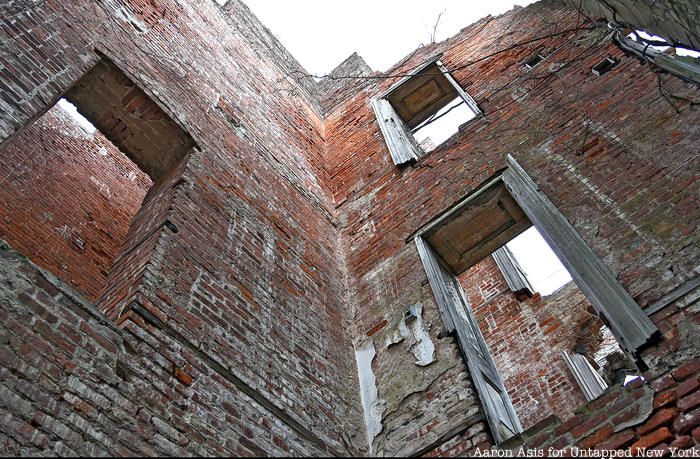
Inside the roofless structure you really get a sense of its complex history, structural potential, and its potential as a contemplative open space. Asis says, “The structure is in a raw state of abandonment — but physically moving through it, you can feel the complex layers of history, treatment, and pain.” The interior architectural volumes are dominated by strategically placed steel components and creates a very powerful feeling of occupying the past, present, and future — in one moment.

The ruin was structurally reinforced in 2007 following the collapse of a large section of the northernmost wall of the structure. RIOC installed temporary stabilization to building, to ensure the remaining structure remains intact — but it’s still not secure enough for general public access.

Yet, the recent efforts of Friends of the Ruin and RIOC show promise. Asis says, “The Ruin is fast becoming a great success story for collaborations between government agencies, design professional, non-profit interests, and community members — working together to save a unique piece of New York City history.”
See below for additional photographs of this extraordinary piece of New York City history:

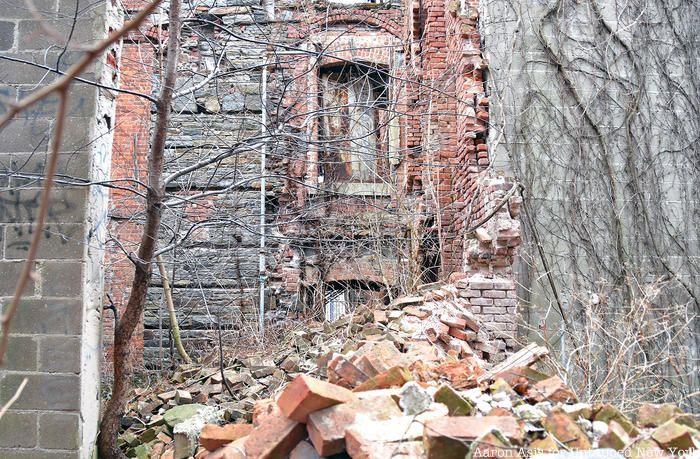
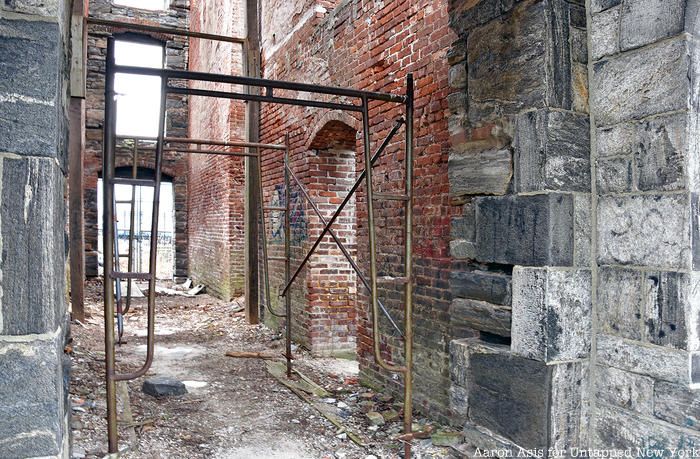
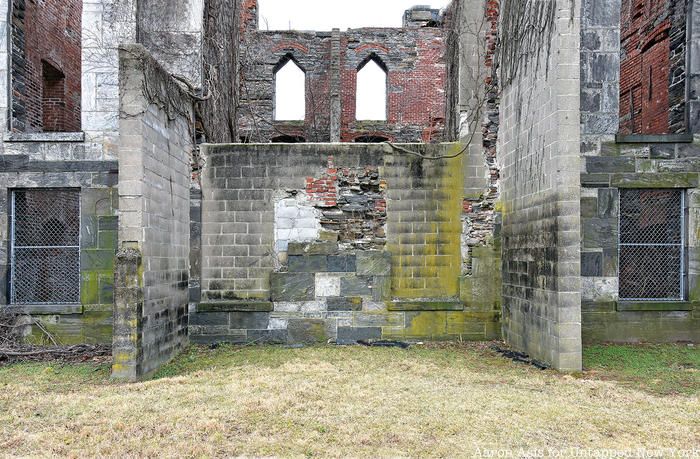


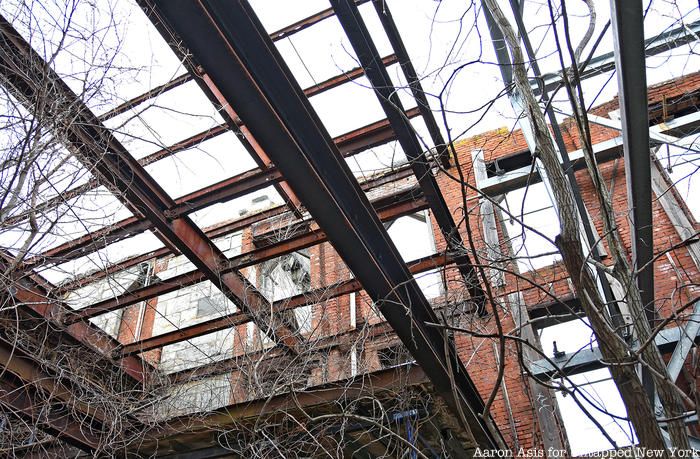
Unforgotten Films and Untapped New York will continue to share updates images, and information to support the efforts to preserve this structure moving forward.
Next, check out NYC’s former quarantine hospitals and islands.
Subscribe to our newsletter